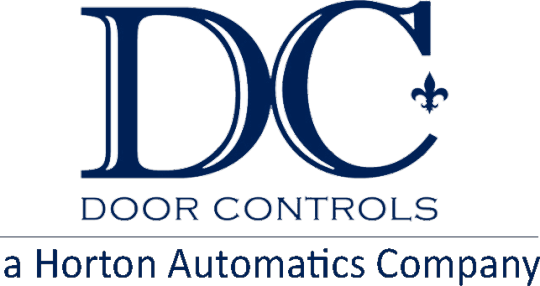We are a company that specializes in automatic doors. We provide, install, integrate, and service complete access solutions. We are available 24/7 to serve your needs. Door Controls is backed by over 50 years of product expereince and certifies AAADM inspectors. Door Controls / 130 Veterans Memorial Blvd, Kenner, LA 70062, United States / +1 (504) 468 8337 / www.doorsincontrol.com
Don't wanna be here? Send us removal request.
Text
Follow Us Online

https://www.linkedin.com/company/door-services-corporation/
https://doorcontrols.wordpress.com/
https://en.gravatar.com/doorsincontrol
https://www.pinterest.ca/doorcontrols/
https://doorsincontrol.weebly.com/
https://about.me/doorcontrols
https://doorcontrols.blogspot.com/
https://sites.google.com/view/doorcontrols/
https://doorsincontrol.wixsite.com/doorcontrols
https://6102003233f54.site123.me/
0 notes
Text
Doors for Buildings: Why they Matter & How They Work

Picture this: After you have finished your checkout, at the grocery shop with four heavy bags in your hand, the cashier has neatly bagged your groceries. Nothing happens as you approach the large, glass door. Is it possible that the door didn't open automatically? You probably don't know what it would be like not to have an automatic door. Automated doors were created over many decades to allow for hands-free entry and exit.
Multifamily and commercial building owners, managers, developers, and/or owners are always looking for ways to improve their property. Automated doors are safer, more convenient, and offer a seamless, hands-free access experience for tenants, visitors, as well as building staff. Continue reading to find out more about the importance of automatic doors in buildings.

How do automatic doors work? An automatic door requires a sensor to determine when it needs to be opened. Once the sensor has detected a cue, it sends a signal to the door operator mechanism. The mechanism then opens the door after receiving the signal. These are the three most commonly used types of automatic doors sensors:
Pressure sensors
Motion detection and optical sensor
Access control or video intercom system
1. Pressure sensors were first introduced in 1960. They detect changes in pressure or weight and tell when the door must be opened. Pressure sensors are typically installed as mats on the ground or pads. A pressure sensor detects when a person approaches the door and opens it when the person steps on the mat.
2. Motion detection and optical sensor. Many automatic doors now have motion-detecting sensor technology. Motion detectors rely on either passive infrared (PIR), or microwave pulses to detect movement. Microwave beam motion detectors emit pulses off microwaves which measure the reflections of moving objects. A passive infrared sensor, however, measures temperature changes to detect heat. Infrared sensors are more costly than microwave sensors, as they cover a wider area. They can also be subject to interference from electrical currents.
3. An access control system or video intercom system can be used to detect when automatic doors should be opened. Instead of sensing pressure or motion, the door opens by receiving a signal from an Access Control System. This signal can come from a keycard (or fob), a smartphone or any other device programmed with the access controller system.
Multifamily and commercial buildings with limited access requirements can have their doors controlled remotely by cloud-based access controls systems or smart video intercoms. A video intercom or access control system is required for most commercial and multifamily buildings.
Smart video intercoms and access control systems can also improve the tenant experience. The cloud connects the access control system and video intercom to allow building staff the additional convenience of remotely managing access permissions from a web browser. This means that staff don't need to physically visit the building to upgrade their system.

How does a sensor open the door?
Once the sensor has determined that an individual needs to enter the building's premises, it will send a signal to activate the door opening mechanism. The electric motor that powers the door opens it will be used to open the door depending on the type of door. Automatic doors come in many forms:
Sliding doors: These doors can be fixed to overhead tracks or attached with tracks and rollers.
Swinging doors for one-way traffic: Automatic swinging doors can open in or outside.
Folding doors: Perfect for small entrances, where space is limited, automatic folding doors fold into themselves to create a passageway.
Revolving doors: Ideal in high-traffic areas, automatic doors allow simultaneous entry or exit.
The right door to fit your building's needs depends on how pedestrians use your property, and the space available.

Let's now understand how automatic doors operate. Why should you care and what are the benefits of automatic doors? Automated doors have many benefits:
Energy savings: Automatic doors can preserve conditioned air, which in turn will reduce heating and cooling costs.
Touchless entry: No one needs to touch any shared surfaces, such as handles or doors, with an automated door. This helps to prevent germ spread.
Convenience. People appreciate the ease of hand-free entry to their building, especially when it comes to carrying grocery bags, waving their kids or bringing home a new piece of heavy furniture.
How does an automatic door allow for touchless entry?
Automated doors allow for touchless entry. This allows people to walk through the entryway and not have to touch the door. The touchless entry makes apartments safer and more convenient for residents. An automatic door and access control system are required to provide touchless access for commercial properties with restricted access or multifamily buildings.
Door Controls 130 Veterans Memorial Blvd, Kenner, LA 70062, United States
+1 (504) 468 8337 https://www.doorsincontrol.com/ https://door-controls.business.site
1 note
·
View note